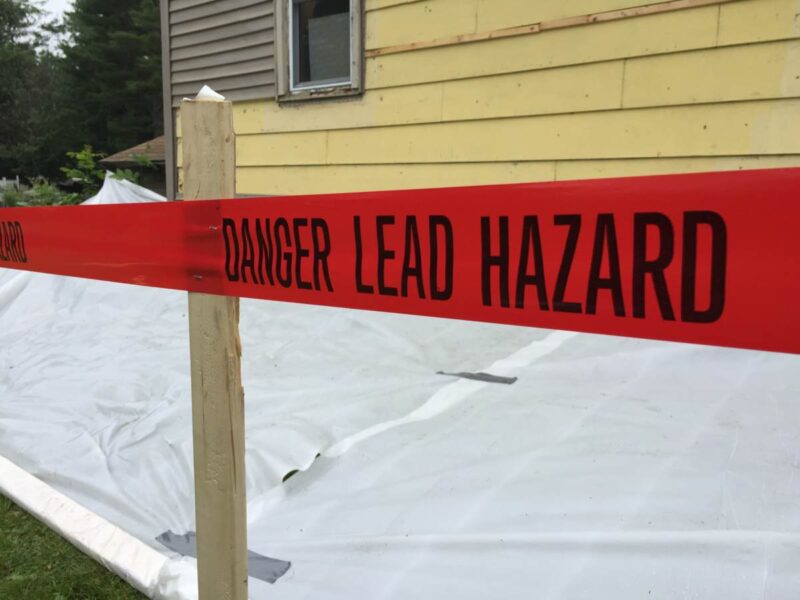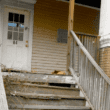Thousands of Maine children and hundreds of thousands across the country are being exposed to poisonous lead paint because a federal law designed to protect them is barely being enforced.
If a contractor disturbs lead paint on a home’s exterior, they must be trained and certified, must wear protective gear and must use special equipment — not just a paint scraper — that minimizes the spread of lead dust.
The 2010 law, the “Lead Renovation, Repair and Painting Rule,” requires that contractors must be trained in and follow lead-safe practices that prevent the spread of lead particles during home renovations. But a Maine Center for Public Reporting investigation has found that the law is widely unenforced, a fact even the federal agency that administers the law admits.
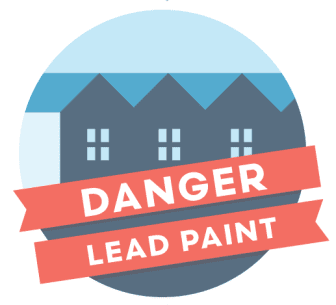 The administrator for the program in the Environmental Protection Agency’s New England office said that she doesn’t have enough staff to enforce the law, known as RRP — and neither do other EPA regional offices across the country.
The administrator for the program in the Environmental Protection Agency’s New England office said that she doesn’t have enough staff to enforce the law, known as RRP — and neither do other EPA regional offices across the country.
“This is absolutely a national problem, there’s not enough resources to do it adequately,” said Sharon Hayes, manager of the toxics and pesticides program for the regional EPA.
The EPA’s enforcement record for the law in Maine bears out Hayes’ assertion: It has pursued only three enforcement actions for violations of the RRP in Maine since 2010.
“I’m sure we’re missing cases everywhere, not just Maine,” said Hayes. “We’ve probably had on the order of 20 some-odd cases in all of New England. It’s not a lot, but it’s the best we can do.”
Given the lack of resources, said Hayes, her agency has concentrated recently on conducting high-profile enforcement actions in select cities, such as New Haven, Conn. and Nashua, N.H.
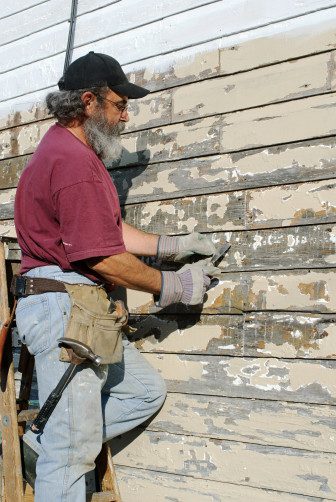
When the RRP went into effect in April of 2010, the EPA press release claimed it “will protect millions of children from lead poisoning.”
As recently as April of 2014, the Washington-based EPA official in charge of the program, Tanya Hodge Mottley, said, “I am pleased with the state of implementation of the lead RRP rule thus far, and at the same time, I think there is much that can be done to make it more successful — both by EPA and by the contracting community. We have a good foundation in place and we continue to look for ways to grow and improve the program.”
Mark Paskell, board chairman of the National Association of the Remodeling Industry and a provider of training in RRP methods in Massachusetts, had a harsh assessment of the program.
“The long and short of it is … they have little or no enforcement and the EPA is doing nothing. They’re doing nothing,” said Paskell.
The law was passed to fill a hole in regulations. There were laws that required landlords to protect tenants from lead poisoning but none that protected the home owner who hired contractors to renovate a home built before 1978, where lead paint is likely to be present.
Wes Stewart, an attorney with the Green and Healthy Homes Initiative, the nation’s leading advocates for the eradication of childhood lead poisoning, said there was no law that directly addressed work done by contractors who disturbed lead-based paint in private residences and childcare facilities.
Before the RRP law, contractors went into housing or daycare centers that had lead paint and sanded, tore down walls, pulled out windows, replaced flooring or clapboards or otherwise disturbed surfaces covered in lead paint — and the toxic lead dust settled everywhere, potentially poisoning those who ingested it or breathed it in.
The 2010 RRP rule required that “firms performing renovation, repair and painting … in homes, child care facilities, and kindergartens built before 1978” had to complete an eight-hour certification course on lead-safe practices and undergo hands-on training for recertification every five years. Contractors must then use those lead-safe practices on the job or face fines of up to $37,000 per day for violations.
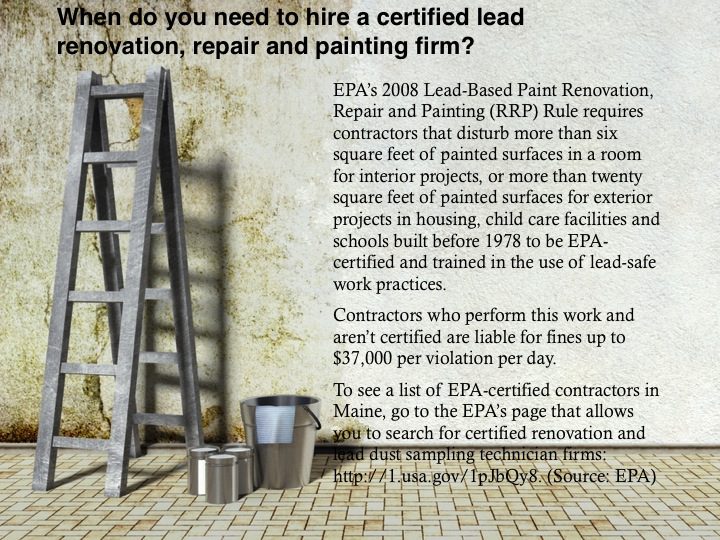
Although Maine has conducted outreach to get contractors and landlords to attend the RRP courses, the EPA list of certified renovator firms in the state has only 1,160 names of firms or landlords on it. That’s less than 25 percent of the 4,700 “construction” firms in the state, according to the U.S. Census.
The many practices contractors must perform under the RRP Rule include providing owners with “Renovate Right,” a pamphlet that describes the lead poisoning dangers from renovating homes; containing dust in the work area; wearing protective gear; and covering “the floor surface with taped-down plastic sheeting in the work area a minimum of six feet beyond the perimeter of surfaces undergoing renovation or a sufficient distance to contain the dust.”
Hayes’ acknowledgment that the EPA can’t enforce the law doesn’t come as a surprise to Stewart, who said, “the reality is there’s little risk of being caught.” And contractors in Maine also say that the law is routinely flouted.
Contractor: No visible enforcement
Dan Woodward, a contractor from South Berwick, said, “I don’t see anybody enforcing any of it down here.” Woodward, who has taken the RRP training, only does lead-safe work — and that’s cost him business over the years because lead-safe work is more expensive.
“I end up losing the job because the homeowner gave the job to someone down the street who didn’t want to wear a mask,” said Woodward.
Jeff Baril is a code enforcement officer in Lewiston who’s always checking for compliance with building codes when he goes around the city. He said the RRP law isn’t enforced in his city.
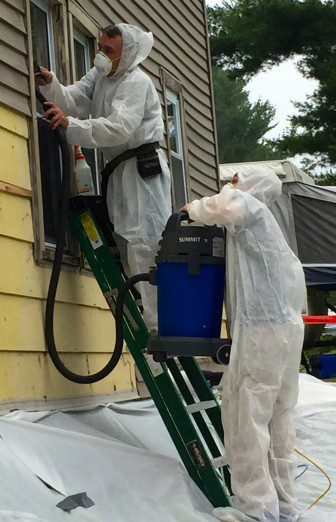
“I gotta tell you, I’ve never met a federal inspector that’s here looking at it,” he said.
Mark Patterson owns Patco, Inc., a custom home building firm in Biddeford, and is treasurer and former president of the Home Builders & Remodelers Association of Maine. He said people running smaller contracting firms tend to think they can get away with ignoring the law because they’re too small to be noticed.
“Unfortunately that’s the way a lot of this stuff happens,” said Patterson. “Laws get passed and a lot of the smaller guys are just saying ‘I won’t get caught.’ Many guys will take chances.”
Mark Farquhar, an attorney with the National Conference of State Legislatures who has studied lead laws across the country, said that the lack of enforcement creates a terrible choice for contractors.
“If they go by the law, they’re at a competitive disadvantage; if they don’t, they could poison a kid and they’re going to be liable for it,” said Farquhar.
Thirteen states have taken over administration and enforcement of the RRP law or passed their own version of it, including Massachusetts.
But Maine didn’t assume administration and enforcement of the RRP law because “that would have taken the state saying ‘Okay, we think it’s worth paying for two more people,’” said Carole Cifrino, a state Department of Environmental Protection staffer who co-authored a 2010 state study on what it would take to make Maine’s housing lead-safe.
“There wasn’t a lot of enthusiasm for that,” said Cifrino, who still works for the state.
No “bunny suits”
So there’s no state environmental staffer or local code enforcement officer who would catch infractions.
“The code officer’s probably going to not be following that, not going to report it. You’d be reporting every single household — it’s very rare that you see somebody dressed in a bunny suit painting the side of a house,” contractor Patterson said.
Though some local code enforcement officers do intervene out of concern when they see something unsafe.

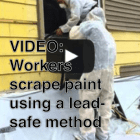
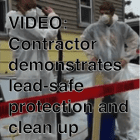
Scott Davis, Bath’s code enforcement officer and the editor and publisher of “The Enforcer,” the newsletter of the Maine Building Officials and Inspectors Association, said, “we have no statutory role in the lead thing.”
But, he said, “sometimes I’ll see someone dry sanding outside of a house, I’ll stop and say, ‘Have you taken the lead thing? You can’t be blowing this all over the neighborhood.’”
The lack of enforcement isn’t isolated to contractors working on other people’s homes. Landlords who perform work on their rental units or who have employees work on those units must also use RRP methods. Prior to the law going into effect, the state offered training classes and did extensive outreach to landlords to invite them to attend the classes.
Carleton Winslow, head of the Maine Apartment Owners and Managers Association, said he nevertheless doubts that many of the state’s landlords even know what regulations they’re supposed to obey.
“In Maine, there are probably more landlords like the mom and pop stores. They own the three decker that they live in, and have no idea about federal and state regulations and laws,” said Winslow.
There are measures Maine could take short of assuming control over RRP. Some towns in Connecticut review whether contractors have taken the RRP training and made the proper disclosures, though only when those contractors apply for a permit. (Many renovation, repair and painting projects don’t require permits.)
And since 2012, Providence, R.I. has required “all applicants for city building permits on homes built before 1978 to provide proof that contractors working on the homes have … (RRP) licenses,” according to a state press release.
The release stated that “the number of Providence children with elevated blood lead levels in 2013 compared to 2012 declined by 128 cases, from 530 to 402.” The decline also coincided with requirements that “landlords obtain certificates of conformance to show their homes are safe for children.”
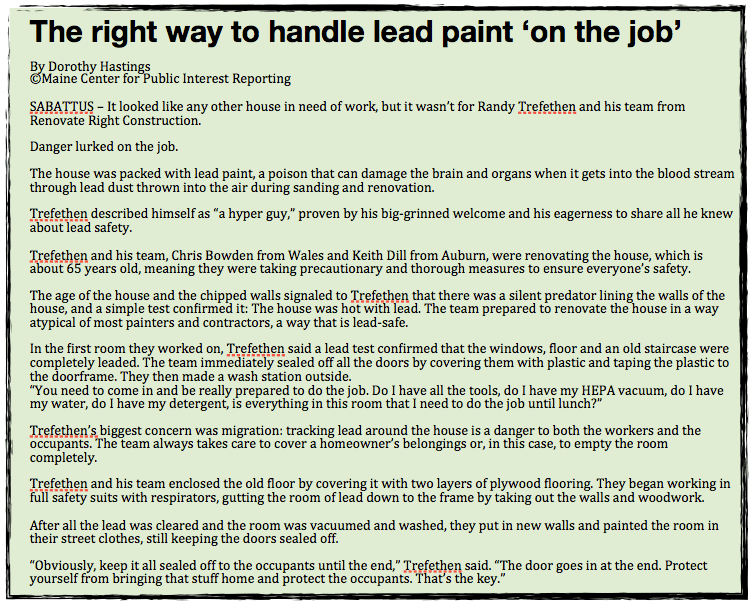
The research and writing of this story was supported by a grant from the Emanuel and Pauline A. Lerner Foundation. This is the third story in a four-part series.

